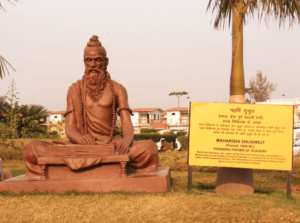
Since the Vedic Age, the Rig Veda and the Atharva Veda have referenced medicines and the art of healing. Two of the most well-known ancient Indian texts related to medicine and surgery are the Caraka Samhita and the Susruta Samhita. Both the Caraka and Susruta Samhitas claim descent from the Atharva Veda. However, it’s uncommon to come across personal accounts of the experiences of patients.
Arogya, which means “good health,” involves the long-term goal of staying physically and mentally well. When a person is svastha (healthy), their physical and mental well-being are in harmony with one another. The Susruta Samhita emphasises the need of a harmonious relationship between the soul, senses, and mind, as well as the dosas, agni (digestive force), dhatus (tissues), and malas (excretory products). Asvaghosa, writing in the second century CE, introduces the idea of dhatusamyam in his Buddhacharita. This idea refers to a state of complete mental and physical well-being that results when all of the body’s tissues are in harmony with one another.
Ailments resulting from improper use of one’s senses (artha), acts (karma), and time (kala) emerge primarily in one’s mind and body. People can either overuse (atiyoga), underuse (ayoga), or improperly use (mithyayoga) these three elements, all of which contribute to the development of various diseases. How a person makes use of their senses may have a significant impact on their level of misery. Misconduct in the realms of speech, thought, and deed leads to prajnaparadha, also known as intellectual blasphemy or errors in judgement. Seasonal changes, or kala, have an effect on people’s bodies and can contribute to the development of illness. The onus therefore falls on patients to some extent to take responsibility for their own health. Perhaps because of its more revered status as a treatise on surgery, this concept is less common in the Susruta Samhita.

Distress came in a variety of forms. Diseases can be classified into two categories based on their nature: endogenous and exogenous. The latter can be a result of supernatural or natural forces, poison, accidents, burns, trauma, spells, imprecations, or ill will. While certain scholars attribute similar results to previous sins, Atreya argues that prajnaparadha—specifically disrespectful behaviour towards deities, ancestors, rsis, elders, and so on—is the true root cause. The Charaka Samhita asserts that karma is crucial in determining one’s emotional and physical health. Stupidity, dumbness, blindness, deafness, and ugliness, among other physical and sensory impairments, are all linked in Manusmrti to wrongdoing in either the present or a previous life.
According to ancient beliefs, a developing human being is made up of the four mahabhutas—air (vayu), fire (agni), water (jala), and earth (prthvi). These elements are said to originate from four sources: the mother, the father, the mother’s nourishment, and the self. The soul’s past deeds and the parents’ acts have a profound impact on a person’s mental and physical make-up. In reality, according to Atreya, illnesses arise as a result of wrongdoing in a past life. Repercussions from actions in a previous life, or Daiva, are said to be permanent, unchangeable, and unbroken. Some people choose to call it fate. Karmaja, the diseases brought on by such deeds, cannot be cured by conventional medicine. Healing occurs after the effects of past actions have run their course. According to Susruta, daiva is a category of sicknesses that are not predetermined but are divinely distributed or related with fate, fortune, or chance. The daiva of Caraka is associated with karma, whereas the daiva of Susruta is closer to the devas.
However, the karma hypothesis raises the problem of a fixed lifetime, which is at odds with medical research. According to Atreya, one’s sins from past lives might be forgiven if one performs good deeds in this life (known as purusakara). Common examples of such practises include praying, fasting, giving gifts to the gods, and taking herbal remedies.

Numerous skin disorders fall under the umbrella term of kustha, and it is believed that sinful actions such as murdering brahmanas, women, and individuals of high position, or stealing money from others without their knowledge, can cause it. The widespread prejudice against those who suffer from skin conditions gave rise to these ideas. There was a widespread belief that those who died from kustha would inevitably have subsequent incarnations affected by the same illness. These diseases are very contagious, hence the affected person was probably shunned by society.
A comprehensive examination of the ancient Indian medical writings, such as the Caraka Samhita and the Susruta Samhita, in their entirety reveals extraordinary insights into the intricate web of relationships between the human body, mind, karma (actions), and sickness. The wide variety of concepts developed by our forebears shows a holistic view of health, in which a person’s physical health is intrinsically related to their mental and moral well-being.

